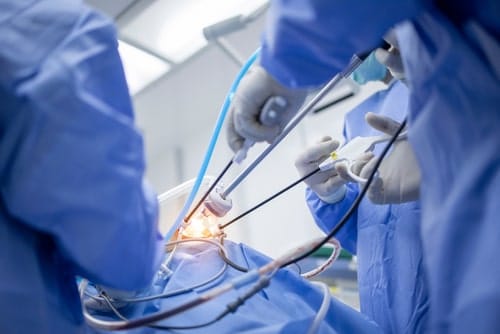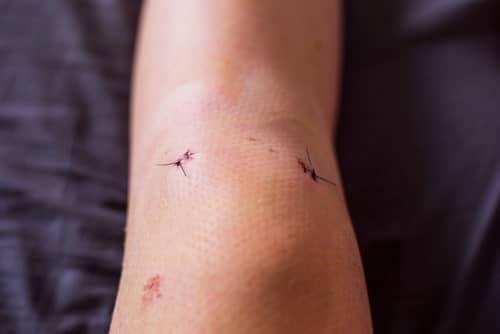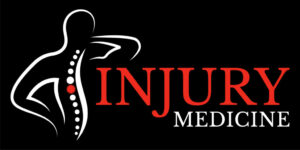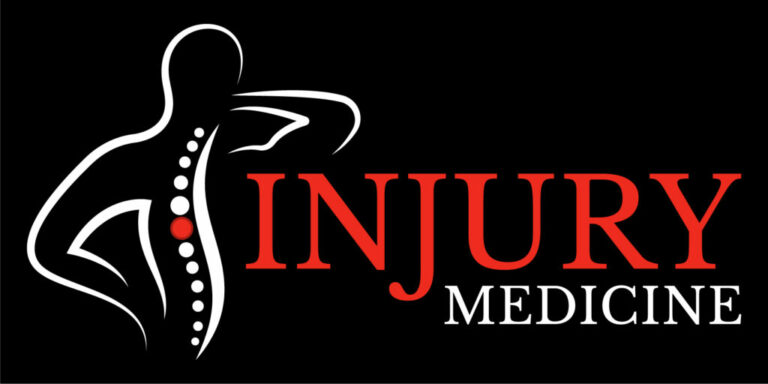Minimally invasive procedures are surgical techniques that use small incisions and advanced medical technologies to minimize the damage to surrounding tissues, reduce pain and discomfort, and speed up recovery times.
These procedures are typically performed using special instruments and small cameras called endoscopes, which allow surgeons to see and operate inside the body without making large incisions. Some common examples of minimally invasive procedures include laparoscopic surgery, arthroscopy, endoscopy, and robotic surgery.
What Are the Benefits of a Minimally Invasive Procedure?
Minimally invasive procedures have become increasingly popular for various surgeries. Medical facilities and hospitals have been investing in these procedures to make them safer and more convenient for patients. The approach has numerous benefits that have contributed to its widespread adoption.
Smaller Incisions
A major advantage of undergoing a minimally invasive procedure is that it requires only a small incision compared to traditional surgeries that needed a larger incision to access the affected body part. As a result, it causes less trauma to the body, minimal scarring, and less postoperative pain.
Increased Accuracy but Reduced Risks
In addition to providing a better view of the organ being operated on, minimally invasive procedures also result in less bleeding and swelling due to the smaller incisions. The wounds heal more quickly, reducing the risk of infection.
The use of advanced instruments enables delicate and complex procedures to be performed with greater precision, resulting in better outcomes for patients.
Less Scary and Short Hospital Stay
This reduces the overall cost of healthcare and allows patients to get back to their daily lives sooner. With smaller incisions, there is also less scarring, bleeding, and swelling, which can lead to a reduced risk of infection.
The use of advanced cameras and instruments in minimally invasive procedures allows for more delicate and complex work to be done, resulting in better outcomes and a faster recovery time.
Are There Risks to Minimally Invasive Procedures in Camden?
Many surgeons now prefer minimally invasive procedures over traditional open surgery because of their effectiveness, safety, and ability to meet the growing demand for surgical services.
Minimally invasive procedures typically result in shorter hospital stays and smaller incisions, reducing postoperative pain and scarring. This has made them increasingly popular among patients and medical professionals alike.
Although minimally invasive procedures have many benefits, there are some risks associated with their use. These risks include:
- While robotic surgery has many benefits, one potential risk is that it may take longer than traditional open surgery due to the time required to set up and calibrate the equipment.
- All surgery carries a risk of infections.
- Bleeding is a risk in any surgery.
Although minimally invasive procedures have their risks, they are generally considered safer and more beneficial than traditional open surgery.
At Injury Medicine, our highly trained and experienced doctors use state-of-the-art equipment and techniques to minimize the risks and provide the best possible care for our patients.
We prioritize safety and work closely with our patients to ensure their comfort and understanding throughout the process.
Different Types of Minimally Invasive Procedures We Offer at Injury Medicine
At Injury Medicine, we offer a variety of minimally invasive procedures to ensure that we provide personalized care to meet your specific needs. Our highly specialized and experienced doctors can perform these procedures to guarantee the best possible outcomes.
These Procedures Include:
Brachial Plexus Block Injection
The procedure takes only 20 minutes and is performed using a local anesthetic. A small needle is inserted into the affected area with the assistance of an X-ray. It is an ideal solution for patients with brachial plexus injuries.
Caudal Steroid Injection
A steroid injection is given to the back to reduce inflammation and nerve pain, resulting in relief for the back.
Celiac Plexus Block
A nerve block injection treatment is used to prevent the celiac plexus nerves from sending pain signals to the brain, which helps to relieve pain.
Chiropractic
Chiropractic care is a complementary and alternative medicine approach used to diagnose, treat, and prevent musculoskeletal and spinal disorders.
Discography
An imaging test, such as discography, can be used to diagnose the cause of back pain. This test helps determine if there is an abnormal disc in the spine that may be causing the pain.
Epidural Steroid Injection
It delivers anti-inflammatory medicine into the space outside sack fluid around your spinal code.
Facet Blocks
This procedure involves injecting a combination of local anesthetic and steroids into the joint space of your spine to reduce inflammation.
Facet Joint Injection
A procedure in which a small amount of local anesthetic is injected to numb the facet and/or sacroiliac joints.
Injections for Back Pain
Injections for back pain are a method used to alleviate pain by targeting inflammation and nerve damage in the back. This treatment provides both short-term and long-term relief from back pain.
Joint Injections
These injections are designed to relieve pain in major joints, such as the hips, shoulders, and knees, by reducing inflammation in the joints. They provide both pain relief and preventative measures to reduce the occurrence of pain.
Kyphoplasty
Kyphoplasty is a procedure to treat spine bone fractures by inflating a balloon in the bone and injecting bone cement to stabilize the vertebra and relieve pain.
Radiofrequency Ablation
Radiofrequency Ablation disrupts pain signals by using radio waves to produce electrical currents, which can provide relief from pain.
Medial Branch Block
An injection is used to deliver a potent anesthetic to the medial branch nerves, which send signals to the facet joints, to provide pain relief.
Medication Management
Monitoring a patient’s medication is crucial to ensure they receive the intended therapeutic benefits and avoid potential adverse effects.
Nerve Blocks
Sympathetic nerve blocks are used to diagnose and treat the source of pain, tingling, or burning in the arms, hands, feet, or legs.
Occipital Nerve Block
Occipital nerve block is a minimally invasive procedure used to relieve pain caused by the occipital nerves, which are located at the back of the head above the neck.
Peripheral Nerve Block
Nerve blocks can serve both diagnostic and therapeutic purposes in treating various conditions such as neuropathy, headaches, and pelvic pain.
Sacroiliac Joint Steroid Injection
This procedure, known as a sacroiliac joint injection, is utilized to diagnose and treat pain by administering a local anesthetic and steroid medication into the sacroiliac joint.
Sciatic Nerve Block
A combination of a local anesthetic and a steroid is injected to provide relief from pain originating from the sciatic nerve.
Sphenopalatine Ganglion Block
The sphenopalatine ganglion block is a minimally invasive procedure that aims to alleviate headaches and facial pain caused by damaged sphenopalatine ganglion nerves.
Spinal Cord Stimulators
A spinal cord stimulator is a medical device that is surgically implanted under the skin and attached to the spinal cord or nerves. It works by sending electrical impulses to the spinal cord or nerves to disrupt the pain signals before they reach the brain, resulting in pain relief. It is often used to manage chronic back and leg pain or neuropathic pain.
Stellate Ganglion Block
This minimally invasive injection procedure is used to treat nerve-related pain and issues. It involves the injection of a local anesthetic around nerves in the neck to temporarily desensitize their branches and provide pain relief.
Sympathetic Nerve Blocks
These injections are utilized to manage lower back and leg pain resulting from complex regional pain syndrome, peripheral neuropathy, shingles, and sciatica.
Transforaminal Epidural Steroid Injection
A minimally invasive procedure is utilized to alleviate pain and reduce inflammation by injecting a combination of local anesthesia and steroid medication to the affected area in the spine.
Trigger Point Injection
Trigger point injections are a minimally invasive procedure used to relieve pain and inflammation. It involves the injection of a local anesthetic, and sometimes a corticosteroid, into a specific trigger point.
Vertebroplasty
Vertebroplasty is a minimally invasive surgical procedure used to treat painful spinal compression fractures in patients. It is also known as vertebral augmentation.
Call Us for Minimally Invasive Procedures in Camden!
Choosing a medical facility equipped with modern surgical equipment can provide you with peace of mind and potentially save you time and money. Surgical procedures are critical and delicate, requiring reliable sets of equipment to ensure safe and successful outcomes.
Minimally invasive procedures, in addition to reducing pain during surgery, also have fewer postoperative complications, making them a preferred option for many patients.
Consider choosing Injury Medicine for your surgical needs. We offer reliable and effective minimally invasive procedures in Camden, providing world-class treatment and support for a full recovery. With state-of-the-art equipment and a commitment to our patients’ well-being, you can trust us to provide the care you need.
Call us today at 864-866-PAIN for more details about our minimally invasive procedures. We will attend to your questions and handle all your needs.



